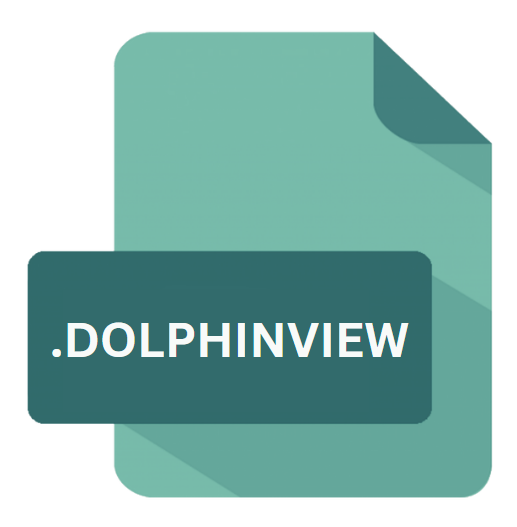.DOLPHINVIEW File Extension

Dolphin Folder View Settings File
| Developer | Dolphin |
| Popularity | |
| Category | Settings Files |
| Format | .DOLPHINVIEW |
| Cross Platform | Update Soon |
What is an DOLPHINVIEW file?
The .DOLPHINVIEW file extension represents a file type associated with the Dolphin file manager, predominantly used in the KDE desktop environment, which is commonly found in Linux distributions.
Dolphin is known for its flexibility, ease of use, and advanced features that make managing files and folders a seamless experience for both novice and experienced users.
The .DOLPHINVIEW file specifically stores the view settings of a folder, enabling users to customize and maintain their preferred layout for specific directories.
More Information.
The history of the .DOLPHINVIEW file is closely tied to the development of the KDE desktop environment and the Dolphin file manager. Before Dolphin, KDE users relied on Konqueror for file management, which, while powerful, was often criticized for being overly complex.
The KDE team recognized the need for a dedicated file manager that prioritized usability and simplicity while still offering advanced features for power users.
When Dolphin was introduced as part of KDE 4, it brought with it several new features aimed at improving the file management experience.
One of these features was the ability to customize folder views and save these customizations on a per-folder basis.
This capability was made possible through the use of .DOLPHINVIEW files, which were automatically generated and stored in each directory where custom view settings were applied.
The initial purpose of the .DOLPHINVIEW file was to provide users with the ability to personalize their file management experience while ensuring that their preferences were preserved across sessions.
By storing view settings in a dedicated file, Dolphin allowed users to maintain consistency in their workflow and avoid the frustration of having to reconfigure their folder layouts each time they accessed a directory.
Origin Of This File.
The .DOLPHINVIEW file extension was created as part of the Dolphin file manager, which was introduced with the KDE 4 desktop environment in 2007. Dolphin was designed to replace Konqueror, which was previously the default file manager in KDE.
While Konqueror offered both web browsing and file management capabilities, Dolphin was focused solely on file management, leading to a more streamlined and user-friendly experience.
The .DOLPHINVIEW files were introduced as part of Dolphin’s commitment to providing a customizable and persistent user experience.
These files store specific settings for folder views, such as icon size, sorting order, and view mode (e.g., icons, details, or columns).
By saving these settings in a dedicated file, Dolphin allows users to maintain consistency across sessions, ensuring that their preferred folder layouts are always restored.
File Structure Technical Specification.
The .DOLPHINVIEW file is a plain text file that contains various parameters related to the view settings of a folder in Dolphin.
These settings are stored in a simple key-value format, making the file easy to read and edit manually if necessary.
The file typically includes the following information:
- View Mode: Specifies the display mode for the folder’s contents, such as icon view, list view, or column view.
- Icon Size: Defines the size of the icons displayed in the folder, ranging from small to large.
- Sorting Order: Determines how the files and folders are sorted, such as by name, size, type, or modification date.
- Sorting Direction: Specifies whether the sorting order is ascending or descending.
- Additional Settings: May include options for grouping items, showing hidden files, or displaying additional columns in list or column view modes.
How to Convert the File?
Converting a .DOLPHINVIEW file to another format can be challenging due to its proprietary nature. There are a few methods that users can employ:
- Exporting via DolphinView: The easiest way to convert a .DOLPHINVIEW file is to use the export function within the DolphinView software. This allows users to save the data in a more common format, such as CSV, XML, or even image formats like PNG or JPEG for visualizations.
- Third-Party Tools: Some third-party tools may offer limited conversion capabilities, but these are often less reliable and may not support all the features of the .DOLPHINVIEW format.
- Custom Scripts: For advanced users, writing custom scripts to extract and convert data from .DOLPHINVIEW files is an option. This requires a deep understanding of the file structure and may involve using programming languages like Python or MATLAB.
Advantages And Disadvantages.
Advantages:
- Customization: Users can tailor the appearance of each folder to suit their preferences, making it easier to navigate and manage files.
- Persistence: The view settings are saved and automatically applied each time the folder is accessed, eliminating the need for repetitive configuration.
- Simplicity: The plain text format of the .DOLPHINVIEW file makes it easy to understand and modify manually if needed.
Disadvantages:
- Compatibility: The .DOLPHINVIEW file is specific to the Dolphin file manager, meaning that the settings it contains are not transferable to other file managers.
- File Clutter: Each customized folder generates a .DOLPHINVIEW file, which can lead to a proliferation of these files across the filesystem, potentially cluttering directories.
- Limited Scope: The settings in a .DOLPHINVIEW file are confined to view-related parameters, meaning that other types of customizations (e.g., folder permissions or metadata) are not covered.
How to Open DOLPHINVIEW?
Open In Windows
- Opening: The .DOLPHINVIEW file can be opened with a text editor like Notepad or Notepad++.
- Editing: While you can edit the file, its settings are specific to Dolphin and will have no effect on file managers in Windows.
Open In Linux
- Opening: When a folder is accessed in Dolphin, the .DOLPHINVIEW file is automatically read, and the stored view settings are applied.
- Editing: The file can be opened and edited using any text editor, such as Kate or Nano, to manually adjust the view settings.
Open In MAC
- Opening: Use a text editor like TextEdit or Sublime Text to open the .DOLPHINVIEW file.
- Editing: As with Windows, you can edit the file, but the settings will only be relevant if the file is later used in Dolphin on a Linux system.












